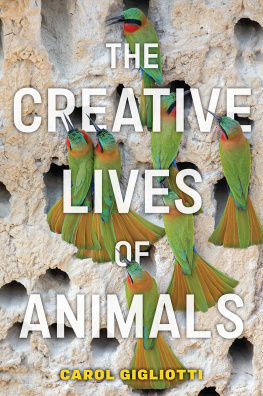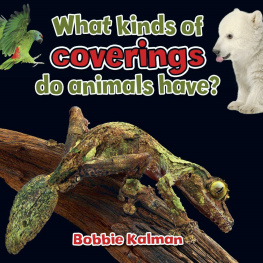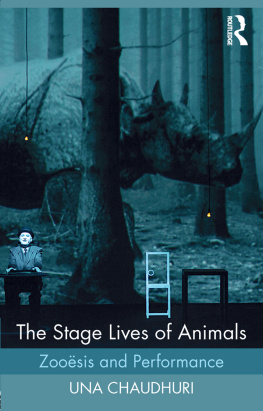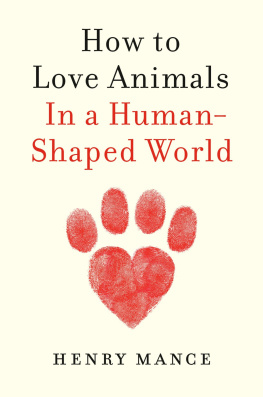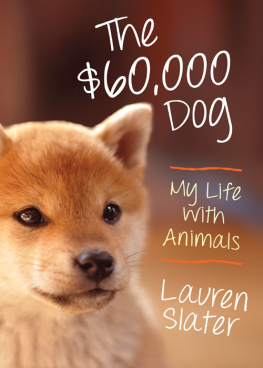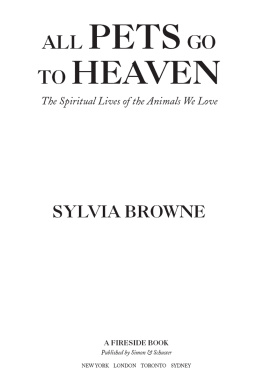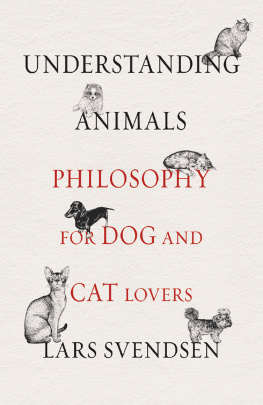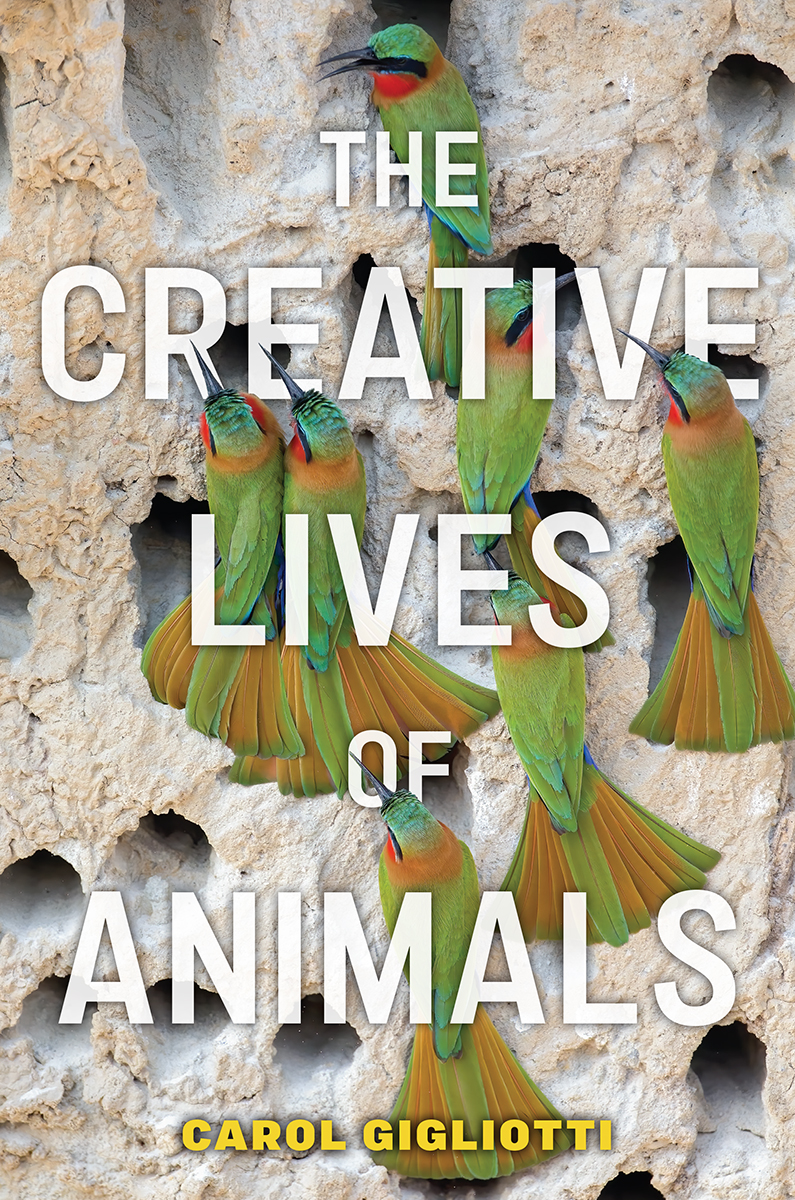
The Creative Lives of Animals
Animals in Context
General Editor: Colin Jerolmack
When Animals Speak: Toward an Interspecies Democracy
Eva Meijer
Just Like Family: How Companion Animals Joined the Household
Andrea Laurent-Simpson
The Creative Lives of Animals
Carol Gigliotti
The Creative Lives of Animals
Carol Gigliotti

NEW YORK UNIVERSITY PRESS
New York
NEW YORK UNIVERSITY PRESS
New York
www.nyupress.org
2022 by New York University
All rights reserved
Excerpt from The Gift: Imagination and the Erotic Life of Property by Lewis Hyde, copyright 1979, 1980, 1983 by W. Lewis Hyde. Used by permission of Random House, an imprint and division of Penguin Random House LLC. All rights reserved.
Excerpt from The Evolution of Beauty: How Darwins Forgotten Theory of Mate Choice Shapes the Animal Worldand Us by Richard O. Prum, copyright 2017 by Richard O. Prum. Used by permission of Doubleday, an imprint of the Knopf Doubleday Publishing Group, a division of Penguin Random House LLC. All rights reserved.
References to Internet websites (URLs) were accurate at the time of writing. Neither the author nor New York University Press is responsible for URLs that may have expired or changed since the manuscript was prepared.
Library of Congress Cataloging-in-Publication Data
Names: Gigliotti, Carol, author.
Title: The creative lives of animals / Carol Gigliotti.
Description: New York : New York University Press, [2022] | Series: Animals in context | Includes bibliographical references and index.
Identifiers: LCCN 2022002174 | ISBN 9781479815449 (hardback) | ISBN 9781479815463 (ebook) | ISBN 9781479815487 (ebook other)
Subjects: LCSH : Animal behaviorJuvenile literature.
Classification: LCC QL751.5 .G49 2022 | DDC 591.5dc23/eng/20220203
LC record available at https://lccn.loc.gov/2022002174
New York University Press books are printed on acid-free paper, and their binding materials are chosen for strength and durability. We strive to use environmentally responsible suppliers and materials to the greatest extent possible in publishing our books.
Manufactured in the United States of America
10 9 8 7 6 5 4 3 2 1
Also available as an ebook
To Calder and Kendra for their love, strength, and compassion, to Copernicus, who was with me through everything, and to all the creative beings on this planet.
Contents
Animals as Creative Beings
The gift is not merely the witness or guardian to new life, but the creator.
Lewis Hyde, The Gift
Animals create.
Some use their intelligence, self-awareness, and flexibility, three essentials for creativity, to build homes. Beavers engineer their elaborate dams and canals by controlling and creating water flow to transport food and building materials. Understanding exactly what needs their unique habitats demand, they devise appropriate and creative strategies to meet them. Each caddisfly larva, using the same creative qualities as the beaver, constructs a unique protective case around themselves using sticky silk threads expelled from their head. Individuals carefully choose just the right material, such as plants, sand grains, wood fragments, pebbles, and small shells. With these, they construct the exquisitely intricate cases in which they live for up to two years until shedding them as adults.
Whether they are building, communicating their feelings of anger, empathy, or affection, showing their personalities, improvising a new song, charming and seducing a mate, inventing a new game to play, or adding to their collective cultures, their creative processes enhance their lives and often contribute to the diversity of this planet.
If I had said these things even five years ago, the amount of argument I would have received would have stopped this discussion in its tracks. Audiences who read books on nature, the environment, animals, and science and are now familiar with new thinking on animal intelligence, emotion, and self-awareness will find additional reasons to see animals as valuable and powerful beings. Those readers who still find this thinking surprising will find explanations of how the creative behavior of animals rests on these and other qualities once considered to belong only in our species.
Most of us view animals through a very narrow lens, one that sees only bits and pieces of beings who seem mostly peripheral to our lives. In actuality, animals are complete individuals with the potential for creative behavior in many aspects of their lives. Hearing the gorgeous and uniquely pure whistles of a sparrow refreshes our spirits. Recognizing those whistles as part of the creative languages of birds cracks open a wider view of animals place in the world. What we might not know is that many songbirds are not born knowing how to sing. For these birds, their songs are not innate; they learn their songs. Not only that, but where the songs are learned, when they are learned, and from whom they are learned are unique to each species. The ability to learn in varied ways points to traits we evoke when discussing the foundations of cognition, consciousness, and creativity in humans and is just as useful in discussing those foundations in animals.
Male bowerbirds of New Guinea and Australia practice for many years carefully constructing lavishly decorated bowers of several types, all for love. To further charm and seduce their prospective mates, they also dance and sing. Some bowerbirds indirectly cultivate a berry plant they use not as food but as decoration in their bowers. Others collect specific colors of glass shards, plastic toys, straws, flowers, and, for one bower, a glass eyeball.
Like bowerbirds, humans have often designed, engineered, and built beautiful domiciles for love. Our creative urges are mixed with emotions of all kinds: curiosity, compassion, revenge, sorrow, and empathy, among many others. Birds, long accused of being stupid, possess perceptive and cognitive abilities that serve as the basis for their intricate social behaviors. Birds, scientists have now learned, have complex brains as inventive as any mammalian brain. Chickensalthough I have noticed people often forget that they are birdsare social diplomats within stable groups, at least in healthy and open environments. Able to differentiate at least 100 individual chickens by recognizing the idiosyncrasies of their facial features, they are avid communicators and use at least 30 different vocalizations that researchers have interpreted via careful documentation. The human creativity research community considers social diplomacy a valuable creative trait, and those who spend time with chickens have long known how socially adept they are. While the idea that animals have the capacity for various forms of creativity is not new, only recently have scientists considered it a serious source of investigation. As with us, animals creative choices affect their social, cultural, and environmental worlds. Their lives as emotional beings also affect their creativity. In a recent study conducted at the University of Bristol, researchers found that domestic hens exhibit a clear physiological and behavioral response to their chicks distress. The researcher explained, We found that adult female birds possess at least one of the essential underpinning attributes of empathy; the ability to be affected by, and share, the emotional state of another. Empathy helps prepare for a creative solution. Understanding anothers distress is essential in alleviating that distress.
Next page
